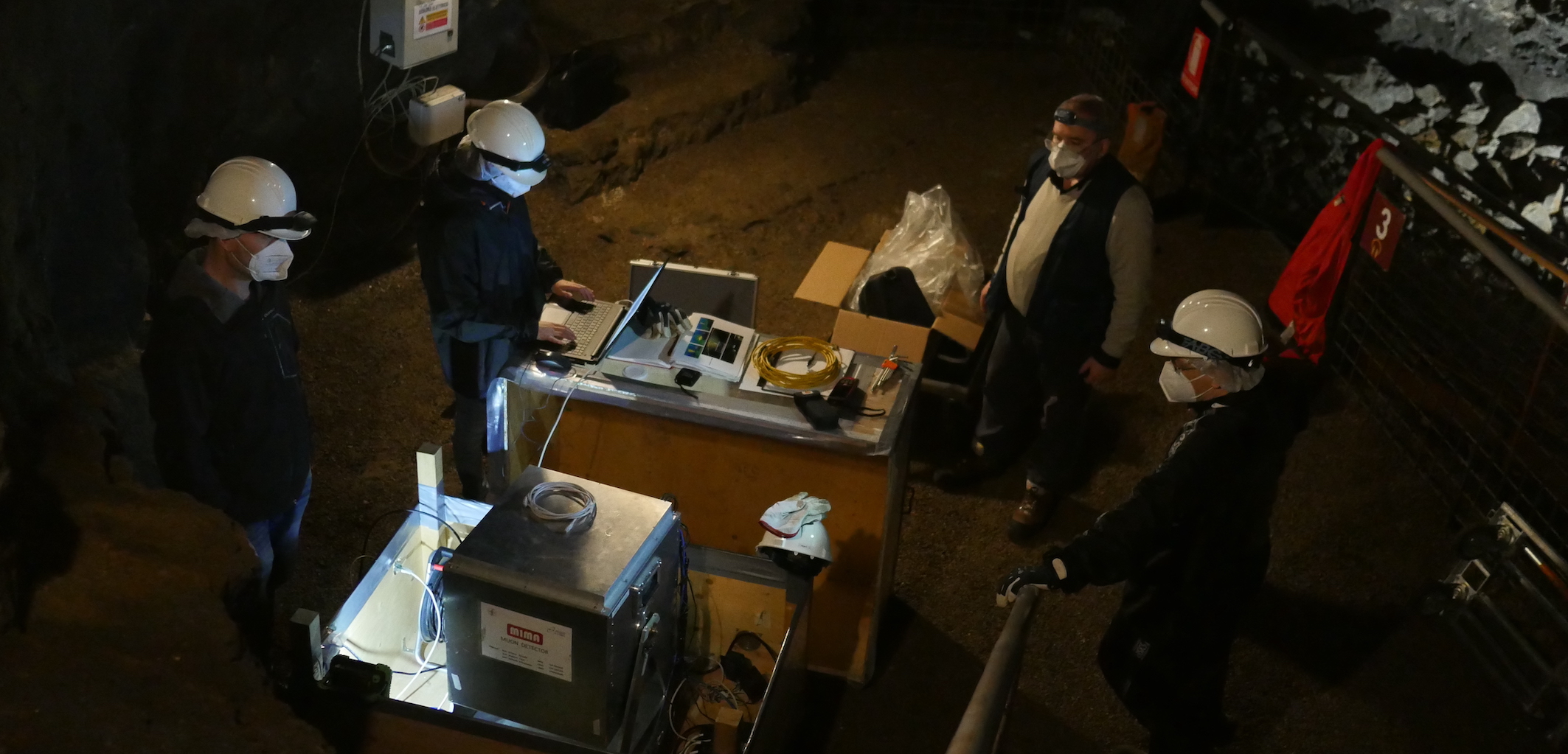Muons may be used to unveil aspects of mining sites that are still unknown and contribute to their protection. The results of the MIMA-SITES project, coordinated by INFN and co-funded by the Tuscany Region with the 2014-2020 ESF and Parchi Val di Cornia SpA, showed that important information for enhancing mines with a cultural-historical and tourist value and for performing useful assessments to make them safe and identify potentially interesting new areas can be obtained with muon radiography. The project was conducted in the Temperino mine in Campiglia Marittima (Livorno), within the Parco Archeominerario di San Silvestro (Archaeological Mines Park of San Silvestro). It involved a group of physicists and geologists, researchers of the INFN Florence Division, the Departments of Physics and Astronomy and Earth Sciences of the University of Florence, the Institute of Geosciences and Earth Resources of the National Research Council of Pisa (CNR-IGG), together with Parchi Val Cornia Spa. The results were published in Scientific Reports in Nature and Natural Resources Research.
Muon radiography, also called muography, is a non-invasive technique similar to the better-known X-ray radiography. It uses natural radiation present in the Earth’s atmosphere, muon radiation, for imaging medium-large material structures, with dimensions that can range from one metre to several hundreds of metres. The MIMA-SITES project is one of a number of activities that started in 2017 in the Parco Archeominerario di San Silvestro with the goal of validating the methodology of muon radiography in the mining field. These activities are organised by the INFN Florence Division and by the Department of Physics and Astronomy of the University of Florence. The activities are based on the use of a device: MIMA (Muon Imaging for Mining and Archaeology), which is basically a telescope for muons, i.e. an instrument that can be directed in space and can intercept the passage of atmospheric muons and reconstruct the trajectory of their motion. MIMA is a compact, robust, and lightweight piece of equipment with low consumption. It has, therefore, all the features that make it suitable to be used in complex and hostile environments, like mining tunnels.
Thanks to the muography measurements undertaken as part of the MIMA-SITES project, it was possible to discover cavities and high-density bodies in a part of the tourist tunnel, inside the tunnel an unusual concentration of natural radon gas was observed. Its presence could be linked to the proximity of particular rock materials above the tunnel and to the presence of tunnels that would facilitate its mobility. A study could also be carried out integrating the information already available with that obtained from muon radiography with software programs that are useful for performing safety assessments, using simulations of the stresses of materials around the tourist tunnel. In particular, the distribution of the average land density was measured and low- or high-density areas, corresponding to cavities and volumes of mineralised rock, were identified and reconstructed in 2D. In addition, a patented method for the 3D reconstruction of the volume of cavities, some of which were undocumented, and of a high-density volume was applied using just one muography measurement, i.e. without requiring triangulation.
The Parco Archeominerario di San Silvestro includes the Campigliese mining district, which has been the subject of metalliferous mineral research and extraction activities since ancient times. The Temperino mine tunnel, the subject of the MIMA SITES project, was excavated in 1800 and extended in 1900 in an area characterised by the presence of many Etruscan, medieval, 16th and 19th century mining works – in part cut by the tunnel itself, in part present above it. The known mining works were used to test the application validity of the method, which proved effective for identifying the presence of ancient wells no longer accessible from the surface and high-density zones characterised by the presence of metalliferous minerals. These data are very interesting, both for ensuring the safety of the tunnel that can be visited and for continuing research in the geological and mining areas.
While the MIMA group was developing the muography methodology, doctorate, postgraduate, and bachelor’s degree projects were conducted, and numerous measurements were made, including in other areas of study: two measurements in Florence and Pistoia for studying the damage of river banks, three test measurements in the underground inspection tunnel of the Bilancino dam in Florence, one measurement at the Etruscan necropolis of Palazzone in Perugia, and one test measurement in the Florence Duomo. In addition, a European project, BLEMAB, was launched for using muography in the metallurgy.





